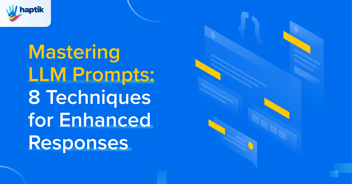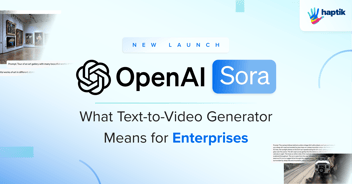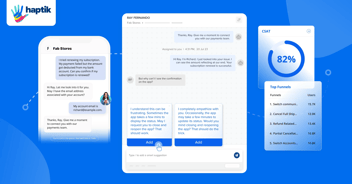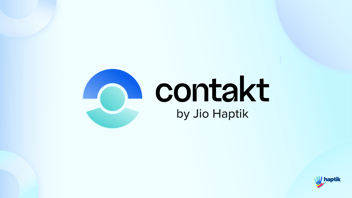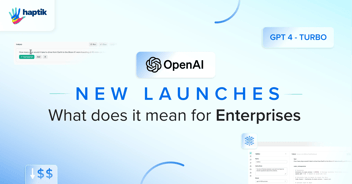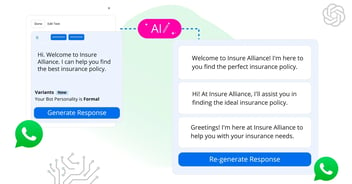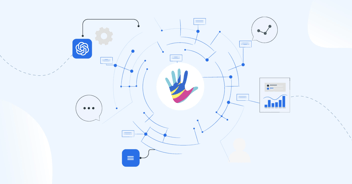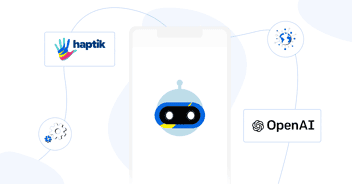AI Moves Closer to Human-Level Intelligence with Upgraded Claude 3.5 Sonnet
As artificial intelligence (AI) evolves, it’s moving closer to achieving human-like cognitive abilities. Anthropic’s release of the upgraded Claude 3.5 Sonnet is a significant step forward. While AI has historically excelled at repetitive, predefined tasks - the new Claude 3.5 represents a huge leap in AI’s reasoning and execution of complex tasks with enhanced autonomy and spatial reasoning abilities. Testament to this, is AI solving complex coding problems, intuitively using a computer on its own (a capability in public beta that Anthropic refers to as “computer use”), and working through advanced agentic workflows.
Explained: How to Craft Effective Prompts for Enhanced LLM Responses
Computer Use with API and Claude 3.5 Haiku
Anthropic has developed an API allowing Claude 3.5 Sonnet to interact with computer interfaces by clicking buttons, moving the cursor, or typing text. With computer-use capability, businesses can deploy bots on their websites for seamless user interactions allowing the bot to complete a wide range of tasks on behalf of the user, end-to-end without building custom APIs for the bot. This improves the ease of automating complex workflows with AI.
Anthropic's computer use can operate mobile devices including iOS, Android, and mobile browsers 📱
— Ethan Sutin (@EthanSutin) October 23, 2024
Here it is ordering me an Uber and posting for me on X. https://t.co/WZZUvndASw pic.twitter.com/y9A51LCMhy
The company has also announced Claude 3.5 Haiku, the next generation of its fastest model, which offers speed comparable to Claude 3 Haiku and at an identical cost. The model offers real-time latency, better instruction following than its predecessor, and improved accuracy when it comes to tool use. That makes it perfect for user-facing applications and driving personalized experiences.
Raising the Bar for Agentic Workflows
The new version of Claude 3.5 Sonnet is particularly suited for agentic tasks that require AI to autonomously select tools, execute instructions, and solve complex problems. Whether it's data processing, workflow management, or real-time error correction, the model has the capacity to drive complex workflows with little to no human intervention. The feature helps in streamlining operations and boosting productivity, which are incredibly powerful for industries where fast and accurate decision-making is paramount.
Executive's Guide: AI Agents: Reimagining the Breadth of Automation
An Evolution in Software Development
Each stage of software development requires a balance between foresight and flexibility, which is often a challenge. However, with the new Claude 3.5 Sonnet, we now have an AI model capable of both planning and executing labor-intensive tasks such as code migration, bug fixes, and language translation. What’s more impressive is it doesn’t need a lot of human supervision, making it a real game-changer for real-world business applications.
Enhanced Comprehension and Visual Data Extraction
For industries that rely on documents and data, like finance, healthcare, and law, a large language model (LLM) like the new Claude 3.5 Sonnet can be invaluable. It combines strong contextual comprehension and reasoning with the ability to synthesize information to deliver precise human-like responses in a nuanced manner.
Another area where the new model shines is visual data extraction. It can extract raw data from complex visuals such as charts or graphs, making it extremely useful for teams that rely on data-heavy workflows.
So, What are the Main Takeaways?
The new Claude models are more than another iteration. They signal a shift in AI from reactive to truly agentic - the spatial reasoning abilities enable the models to interact with the environment proactively to satisfy the user’s stated goals. This has great potential for enterprises building guided workflows to guide less technical users through complex interactions without the need of simplifying these workflows. Their complex reasoning and task execution are the foundation for enterprises to build more advanced conversational solutions (or chatbots) for customer service, enhancing the accuracy and speed of resolution akin to a human agent. Computer Use is an enormous game-changer although it’s still in the nascent stages of development. For instance, it can automate software testing (or QA) and back office tasks.
Claude 3.5 Haiku can be incredibly useful for software applications that require fast and accurate code recommendations, while it can help with efficient processing and categorization of information for finance, healthcare, and research, which typically handle large volumes of unstructured data.
Related: [Download] The CXO's Guide to Enterprise Gen AI Adoption












